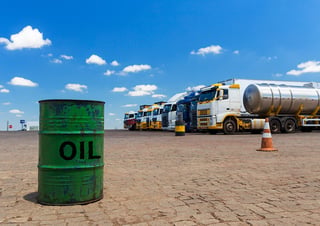2016 Energy Performance RoundUp and What to Look for in 2017

 The last three months for the energy sector were nothing short of impressive. Rebounding from a 36.59% decline in 2014 and a 25.14% fall in 2015, the sector was up 2.37% the first three months of 2016, had a 24.06% surge in Q2, a 1.44% loss in Q3 and a 14.67% gain in Q4.
The last three months for the energy sector were nothing short of impressive. Rebounding from a 36.59% decline in 2014 and a 25.14% fall in 2015, the sector was up 2.37% the first three months of 2016, had a 24.06% surge in Q2, a 1.44% loss in Q3 and a 14.67% gain in Q4.
Crude oil is still close to half the price it was in June 2014 and overall, all energy commodities with the exception of ethanol, posted double-digit gains in Q4 and finished 2016 on a strong note—up 42.57% from December 31, 2015.
Crude Oil
In Q1 NYMEX WTI crude oil gained 3.51% and continued to rally in Q2, gaining 26.06%. In Q3 it traded in a range of $40 to $50 per barrel and was down 0.39% overall. Q4 saw a reversal of this downward trend—closing 11.59% higher and finishing 2016 with a 45.03% gain for the year.
Crude oil production in the United States fell below 9 million barrels a day in April. Rig counts had been falling since last year, but the recent move above $50 caused the number of rigs to rebound. By December 30, 2016, rig counts numbered 525—100 higher than at the end of Q3 and only 11 shy of levels from one year ago.
Looking ahead to 2017, analysts expect oil to trade in a range from $50 to $60 per barrel from January through March. This prediction is based on a 19.61% decline of daily historical volatility on NYMEX futures—signaling that oil is entering a period of consolidation that will keep it in a $10 trading range.
However, there are events occurring all over the world that could send oil higher in an instant. The Middle East is a particularly volatile region and with the United Kingdom leaving the Union, Europe may also present challenges, as could China, North Korea and Japan.
Oil Products
Typically oil products reflect seasonal demand—RBOB gasoline usually does better in the spring and summer; heating oil in the late fall and winter. In Q4 oil products kept pace with raw crude oil, with gasoline and heating oil posting double-digit gains.
Reversing its 13.66% decline in 2015, gasoline posted a 14.41% gain in Q4 and finished the year 31.70% higher since December 31, 2015. For the year, gasoline traded in a range of 89.75 cents per gallon to $1.7038 on active month NYMEX gasoline futures, with the high range occurring at the end of the year. On December 30, 2016, February futures closed at $1.6739 per gallon wholesale.
Gasoline had been in a trading pattern of making lower highs and lower lows since trading at $3.2672 per gallon in March 2013. At the end of December, it broke above the May 2016 highs—indicating that the trading pattern could be ending.
Going into 2017, product prices look bullish. With the incoming Trump administration’s promise of the biggest infrastructure project since the 1950s, the demand for energy will increase. Additionally, the project will spur economic growth, which will also increase the demand for oil products. To that end, the technical and fundamental outlook is positive.
Natural Gas
In 2016, the price of natural gas was on a wild rollercoaster ride but finished the year a big winner. In March, natural gas hit its lowest price since 1998 where it traded at $1.6110 per MMBtu, but moved 28.84% higher in Q4 and led the energy sector by posting a 60.21% gain for the year.
During the first 9 months of 2016, natural gas traded in a range from $1.6110 to $3.9940 and as of December 23rd, stockpiles were 3.360 trillion cubic feet—10.9% below 2015 levels at the same time and 2.3% below the 5-year average.
A weather sensitive commodity and therefore volatile, going forward in 2017 look for the price at times to move higher quickly and depending on Mother Nature, frigid weather could mean a rise to $5 or even higher.
Ethanol
A biofuel—meaning a product of corn—ethanol traded in a range of $1.2960 to $1.76 per gallon over the course of 2016. Q4 saw it underperforming the price of gasoline, but outperforming corn—up 14.71% compared to nearly a 32% gain for gasoline, while corn was 1.88% lower.
The price of January ethanol futures closed on December 30th at $1.6060 per gallon with the price of February gasoline futures closing at $1.6739.
Looking ahead to 2017, ethanol should follow gasoline prices. But keep on eye on political events under the new administration that could affect the economics for refining corn into ethanol—i.e., the ethanol mandate could become an issue and with that an increase in volatility in the ethanol futures markets, as discussions over changing the mandate or leaving it unchanged come into play.